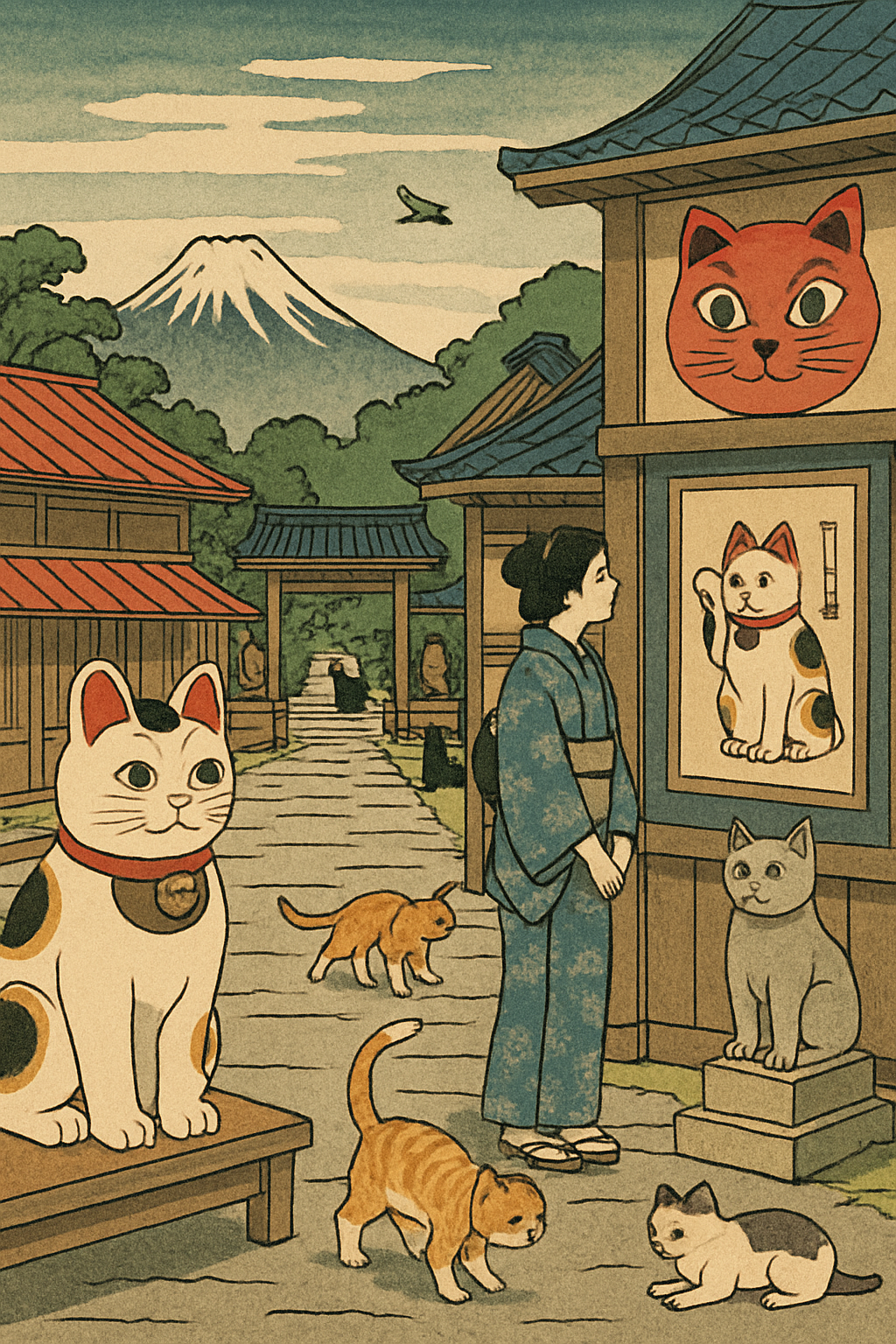The Cat Side of Japan: Where to Experience the Country’s Famous Feline Fascination
A Culture of Cat Adoration
In Japan, the cat is more than just a household pet — it is a spiritual figure, a symbol of good fortune, a muse for artists, and a nationwide obsession that seeps into every corner of daily life. From ancient folklore and temple guardians to bustling “cat towns” and contemporary public art, Japan’s deep-rooted fascination with felines has become a key part of its cultural identity and a unique travel experience for cat lovers around the world.
The Historical Roots of Cat Culture in Japan
Cats first arrived in Japan around the 6th century, likely from China or India, aboard Buddhist ships. Initially revered for protecting sacred scriptures from mice, they slowly evolved into protectors of rice silos, silk stores, and homes. By the Edo period (1603–1868), cats became household fixtures and artistic subjects.
Feline figures started appearing in ukiyo-e prints, folktales, kabuki plays, and literature. Over time, cats transcended their role as pest control — they became symbols of prosperity and mystery, often associated with the supernatural and spiritual.
One of the most iconic figures to emerge is the Maneki-neko, the “beckoning cat” statue seen outside shops and restaurants. With one paw raised in welcome, this cheerful cat is believed to attract luck and wealth.
Places to Experience Japan’s Cat Obsession
1. Cat Island Pilgrimages
Japan has over a dozen islands known for their feline populations, where cats vastly outnumber humans. These remote islands have gained cult status among travellers.
Tashirojima (Miyagi Prefecture): Dubbed “Cat Island,” this is perhaps the most famous feline haven. Locals believe feeding and caring for cats brings prosperity. Dogs are not allowed on the island.
Aoshima (Ehime Prefecture): With a 6:1 cat-to-human ratio, this quiet fishing village has become an unexpected pilgrimage site for cat enthusiasts. Expect narrow alleys, rustic harbours, and endless cats lounging in the sun.
2. Gotokuji Temple (Tokyo)
Reputed as the birthplace of the Maneki-neko, this serene temple in Setagaya is surrounded by thousands of beckoning cat statues placed as offerings. According to legend, a cat once beckoned a feudal lord into the temple, saving him from a thunderstorm. Today, travellers leave cat figurines here in hopes of good luck.
3. Cat-Themed Museums and Cafés
Maneki-Neko Museum (Seto, Aichi Prefecture): Home to over 5,000 lucky cat statues from different regions and eras. Seto is also a major centre for ceramic production — many of the maneki-neko sold across Japan are made here.
Calico Cat Café (Shinjuku, Tokyo): One of the oldest cat cafés in the country. With themed rooms and dozens of feline companions, it’s a soft introduction to Tokyo’s indoor cat culture.
Nekobukuro (Ikebukuro, Tokyo): A “cat theme park” with resident cats that visitors can interact with — less café, more whimsical cat playground.
Cat Art in Public and Pop Culture
Japan’s love of cats finds expression in every artistic medium:
Ukiyo-e and Edo Art: Artists like Utagawa Kuniyoshi portrayed anthropomorphic cats engaged in human activities — dancing, acting, and gossiping.
Contemporary Public Installations:
In Onomichi (Hiroshima), a “Cat Alley” features stone cat statues, paintings, and a hidden “cat shrine.”
In Yanaka (Tokyo), murals and manhole covers depict cats in homage to the area’s large stray cat population.
Anime and Manga: From Doraemon to Natsume’s Book of Friends, cats have long been beloved protagonists or spiritual guides.
Stationmasters and Mascots: Tama the Cat, the former stationmaster of Kishi Station in Wakayama, gained celebrity status and sparked a tourism boom. After her passing, she was enshrined, and her successor Nitama took the role.
Special Mentions
1. Neko no Hosomichi (Cat Alley, Onomichi)
A charming uphill path lined with cat statues, art, and cafés. It feels like a fairytale stroll through a village dedicated to cats and poetry.
2. Enoshima Island
Known for its feral but friendly cats, Enoshima has become a haven for photography-loving travellers and cat watchers alike. The cats wander freely around shrines, cafés, and seaside spots.
3. Cat-Inspired Souvenirs
From cat-shaped confectionery (like neko-yaki) to paw-print tea sets and printed kimono accessories, Japan’s souvenir shops are packed with feline flair.
Why Cat Lovers Should Visit Japan
A country where cats are cultural icons, not just pets.
An artistic lineage that celebrates cats as symbols of joy, wisdom, and luck.
A variety of destinations and experiences — from tranquil temples to quirky cafés and themed alleys.
A chance to explore local traditions, hospitality, and spirituality through the lens of feline admiration.











